Char Dham is the name of the four holy abodes considered the holiest places of pilgrimage, where millions of devotees come to visit. Kedarnath, Badrin
Char Dham is the name of the four holy abodes considered the holiest places of pilgrimage, where millions of devotees come to visit. Kedarnath, Badrinath, Gangotri, and Yamunotri are the four pilgrimage sites associated with the Char Dham Yatra. Nestled in the beautiful scenic Himalayan range, Kedarnath lies at an altitude of 3,584 meters. Kedarnath Yatra is considered the best, as it is regarded as the holiest of all four holy abodes. Every year, more than 1 lakh devotees come to the Himalayas to pay homage at this grand and magnificent temple. This place is believed to be where Lord Shiva resided. Here, you will find one of the 12 Jyotirlingas or Shrines of Lord Shiva in India. Devotees come here to wash away their sins and find the path to Moksha.
For Hindus, the Kedarnath Yatra is an extremely holy journey. The magnificence of the temple is worth seeing. The walls of the entire Kedarnath temple are inscribed with images of numerous Hindu deities and scenes from the epics. A large statue of Nandi Bull is placed outside the main door. It is believed that Nandi Bull guards this holy shrine from all evils. This temple is situated on the bank of the Mandakini River. When you come here, you can experience the beautiful atmosphere and breathtaking snow-capped peaks. Tourists can visit the Kedarnath Temple, Gandhi Sarovar/Chorabari Tal, the Samadhi of Adi Guru Shankaracharya, Vasuki Tal, Kedarnath Musk Deer Sanctuary, Bhairavnath Temple, and also enjoy trekking.
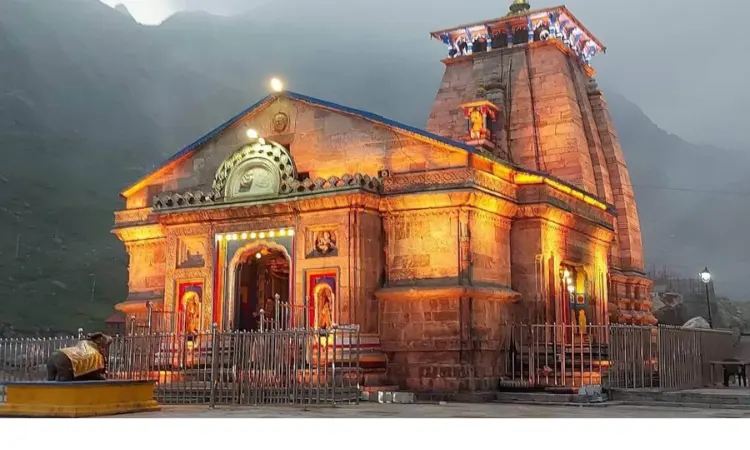
Not only for religious beliefs, but tourists also come here to witness the scenic beauty of Kedarnath town from around the globe. During May and June, this place becomes crowded. Thousands of devotees of Lord Shiva come here to visit the temple during the summer season. In winter, due to heavy snowfall, the idol of Shri Kedareshwar is carried out of the temple after lighting the “Nanda Deepam,” and the temple is closed for the winter. During this time, the seat of Kedarnath is located in Ukhimath. The Nanda Deep burns brightly when the doors open during the month of Vaishakh. In 2013, the Kedarnath flood caused widespread destruction. Previously, the last destination on the Kedarnath route was Gaurikund, but after the flood, a new route for trekking was constructed that starts from Gaurikund. However, today, Kedarnath Yatra by helicopter is considered the best option.
Kedarnath Opening and Closing Dates
There is no fixed date for when the temple will open for worship and when it will close, as these are decided by the priests based on the auspicious day of Akshaya Tritiya and Mahashivratri. The priests at Omkareshwar Temple decide the opening and closing dates of the temples. The temple usually opens on Akshaya Tritiya, and the divine statue of Lord Shiva is moved from Kedarkhand to Ukhimath, where it is worshipped with all rituals. The doors open for worship and darshan for devotees in the first week of May.
Similarly, the closing date is decided by the day on which Bhai Dooj falls, after Diwali. Once all the rituals are performed, the temple closes after Bhai Dooj, usually in November. During the temple’s closure, the shrine is covered in snow, and worship and other rituals are performed at Ukhimath.
| ⛪ Opening & Closing Dates of Kedarnath in 2025 | 🗓 Details |
|---|---|
| Opening Date | 2 May 2025 |
| Closing Date | 23 October 2025 (Tentative) |
| ⛪ Kedarnath Temple Timings | ⏰ Time |
|---|---|
| 🌅 Morning Arti Timing | 04:00 AM – 07:00 AM |
| 🌞 Morning General Darshan | 07:00 AM – 03:00 PM |
| 🚪 Temple Closed | 03:00 PM – 05:00 PM |
| 🌆 Evening Arti Timing | 06:00 PM – 07:30 PM |
| 🌙 Evening General Darshan | 05:00 PM – 07:00 PM |
| 💸 Entry Fees | Free |
History of Kedarnath
The name Kedarnath is derived from King Kedar, who ruled during the Satya Yuga. It is believed that this is the place where Lord Shiva freed the Pandavas from the sin they incurred by killing their cousins and relatives in battle. The story behind this temple is quite interesting. According to the Puranas, the Pandava brothers severely punished themselves in Kedarnath to please Lord Shiva, so He could absolve them of the sin they had committed. In that Yuga, the temple was built by the Pandavas, and the present structure was built by Adi Shankaracharya in the 8th century AD, whose Samadhi can be seen at the back of the temple. A little away from the temple is Mahapanth, which is also called the “Highway to Heaven.” Read more..
Ways to Reach Kedarnath
Kedarnath Yatra offers immense satisfaction and peace. The road route to reach Kedarnath temple begins from Haridwar, also thought of as the “Entry to Heaven,” and ends at Gaurikund, covering Rishikesh, Devprayag, Sonprayag, Srinagar, and Rudraprayag. To reach Kedarnath, you must pass through all these auspicious places either by motor vehicle or on foot. From Gaurikund, you need to trek 16 km uphill, which may take about 6 hours to reach the Kedarnath temple. Some people trek while others use walking sticks or palanquins available there to reach the destination. Along the route, there are resting places for devotees to take a break.
Upon reaching Gaurikund, devotees bathe in the hot spring and pray to the headless Ganesha. It is said that Lord Shiva cut off the head of Bal Ganesha with His Trishul here and later replaced it with the head of an elephant. The Shivlinga on the bank of the Mandakini River is not made by anyone; it is self-manifest. It is believed that this is the hind side of Mahisha.
An alternative to the road route is to hire a helicopter to Kedarnath. Numerous companies nowadays offer Kedarnath tours by helicopter with various packages, allowing people to avoid the long trek and reach the main shrine with ease. Kedarnath Yatra by helicopter is considered the best because it avoids the difficulties faced along the way. Timberline Helicharters, for example, provides helicopter services for Kedarnath Yatra with competitive packages. The helicopter ride takes approximately 15 minutes to reach the destination.
Weather in Kedarnath
Kedarnath during Summers
Summers are cool and pleasant, making it the right time for travelers to relax, visit the temple, and enjoy sightseeing. Summers in May, June, and July are pleasant, with temperatures hovering around 16-19°C and a slightly cold breeze blowing. As a traveler and trekker, a light sweater or pullover is more than enough to wear during the journey. During summers, the sky is clear and blue, and the natural beauty is worth experiencing.
Kedarnath during Winters
Kedarnath is not the place to visit during winters due to its extremely harsh climate. During winters, heavy snowfall and hailstorms close the main temple and other sightseeing activities for the entire duration. Frequent avalanches have also been reported. The roads are blanketed with heavy snow, making the climate inhospitable. The temperature can drop well below 0°C, making it very difficult to live and survive at that high altitude. For about six months, from November to April, the palki of Lord Shiva (Lord Kedarnath) is transferred to a place in Guptakashi and is reinstated in Kedarnath in May. This is when the temple gates are reopened for pilgrims and devotees to visit.
Kedarnath during Monsoons
During the months of July (second half), August, and September, landslides are common and affect the roads leading to the shrine, often blocking them. Hence, it is not advisable for devotees and tourists to visit during the monsoons as heavy rainfall is common. The temperature during this time is around 10°C, making it difficult for devotees to visit.
The floods of 2013 still leave nightmares for the people, as the neighboring region was submerged in water, leaving behind chaos and loss of life and property.
Therefore, the ideal time to visit the shrine is during the summer months of May, June, September, and October. July is the warmest month of the year, but the unexpected rainfall causes landslides and disrupts travel.
Best Time to Visit
The best time to visit Kedarnath is between May-June and September-November. During the monsoon season, visitors may face difficulties reaching here due to heavy rainfall. The temple opens in the first week of May and closes by mid-November. Visitors must carry warm clothes whenever they visit, irrespective of the season. Even in the summer, it is not very hot here, and the temperature at night can drop by 7°C to 10°C. In winter, the temperature may fall below freezing.
Hotels for Stay
There are many hotels where you can stay when you visit Kedarnath. It is a good idea to book a hotel before arriving to avoid any inconvenience. Some of the hotels available include Char Dham Camp, Hotel Priyadarshani, Hotel Agrawal House, Hotel Marwad House, Hotel Rajasthan Sadan, Hotel Himachal House, Hotel Bhopal Bhawan, Hotel Jalandhar House, Hotel Gayatri Sadan, and GMVN Kedarnath. You can choose a hotel based on your preferences and requirements, enjoying the benefits of the pilgrimage.
On your trip to Kedarnath, you can purchase items with religious significance, such as photographs of deities and Rudraksha malas, which are used during the chanting of Hindu prayers.
Places to Visit in Kedarnath
The Kedarnath Yatra astonishes you with the lovely surroundings and places you can visit. The holy places to visit in Kedarnath are as follows:
Kedarnath Temple
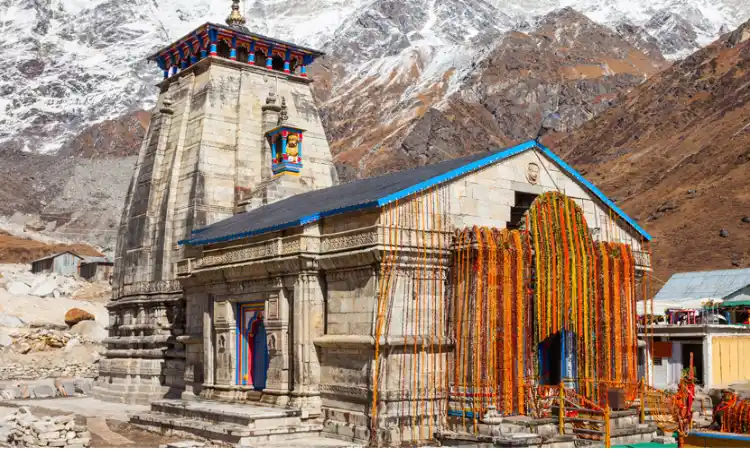
The Kedarnath Temple is one of the holiest temples in India according to the Hindu religion. It is located on the bank of the Mandakini River in Kedarnath. Its origin is said to be ancient, from the time of the Mahabharata when the Pandavas built the temple to free themselves from the sin of killing their kin. The architecture is superb, with numerous carvings of Hindu deities that are very attractive and pleasant to see.
Chorabari Tal
Chorabari Tal, also known as Gandhi Tal, is an ancient lake formed from the glacier of Chorabari. It is believed that this is the place where Lord Shiva enlightened the Saptarishis by imparting his knowledge of Yoga. It is also said that Yudhishthira, the eldest of the Pandavas, departed to heaven from here. In 1948, the ashes of Gandhiji were immersed here as well. The sight of this lake, with ice floating on the water, is truly fascinating.
Vasuki Tal

Vasuki Tal is a beautiful location about 4,135 meters above sea level, located in the mountains. It is a crystal-clear lake that appeals to everyone who visits. There are also attractive camping and trekking spots here, offering impressive views of the Chaukhamba peaks.
Gaurikund
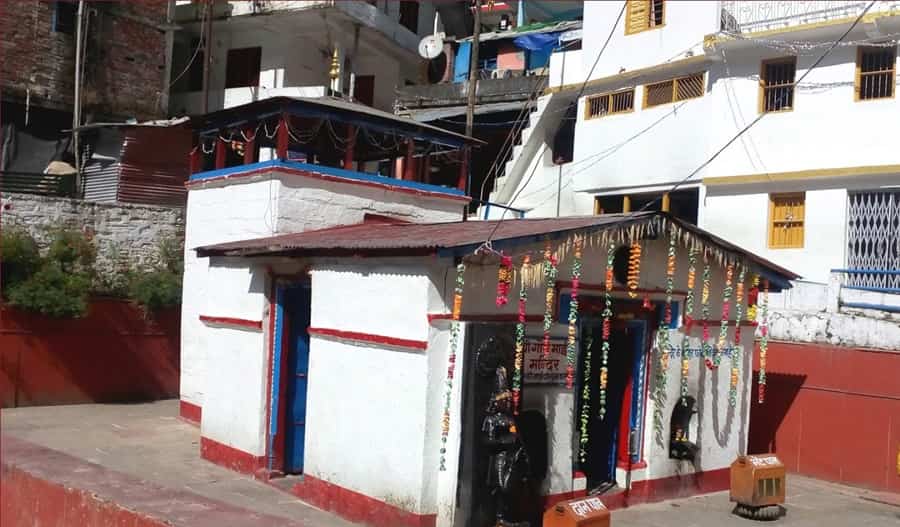
Gaurikund is a trekking point when doing the Kedarnath Yatra. This place is named after Goddess Parvati, and the Gauri Temple is also located here. It is believed that Lord Shiva accepted the proposal to marry Goddess Parvati here. The place is an absolute beauty with lush greenery and the Vasuki Ganga flowing below. Natural thermal springs with medicinal value are also found here.
Triyuginarayan
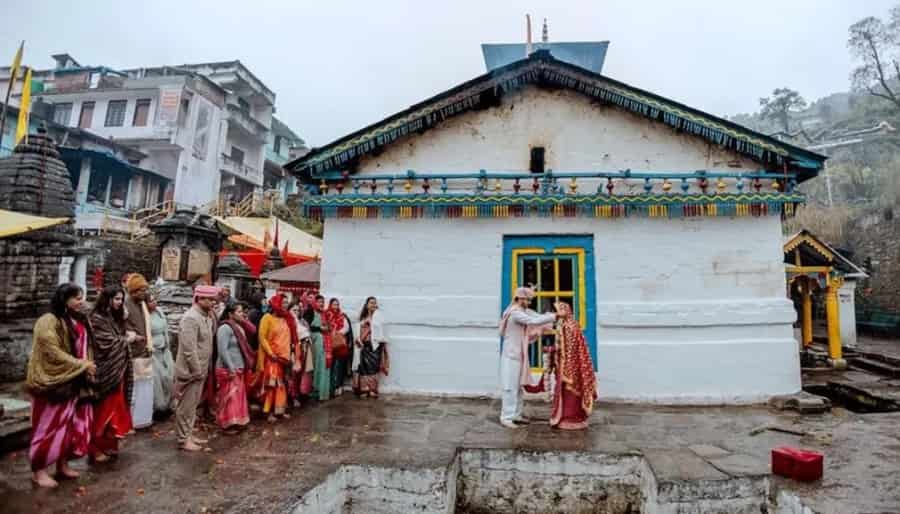
Triyuginarayan is said to be the place where Lord Shiva married Goddess Parvati. Even today, an eternal flame is believed to burn here in front of the temple, symbolizing the divine marriage that took place.
There are other places you can add to your visiting list, such as Kedarnath Wildlife Sanctuary, the Samadhi of Adi Guru Shankaracharya, Gandhi Sarovar, Bhairavnath Temple, Sonprayag, Guptkashi, and valleys for trekking.
- Must Read: Kedarnath Yatra Registration Guide 2025
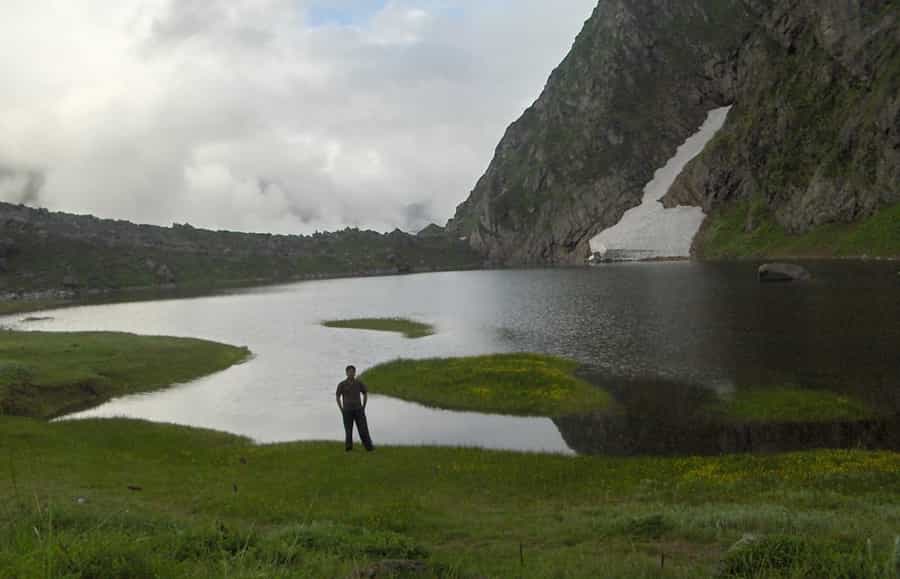
COMMENTS